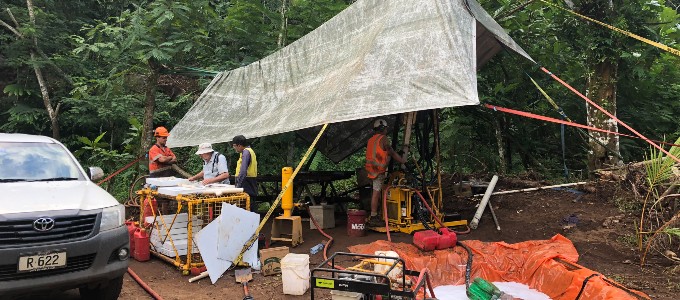Alaoa multi-purpose dam - Samoa

Client: Asian Development Bank
Location: Samoa
Date: 2017 – 2020
Detailed feasibility studies, including environmental and social studies, for a multi-purpose dam to increase flood protection, ensure secure water supply and generate hydropower
Background
As a small island country in the Pacific, Samoa has been heavily affected by severe tropical storms. These extreme events result in significant river discharge and flooding of lowland areas. Tropical events such as Cyclone Evan in 2012 have caused significant damage to both public and private assets, resulting in serious health impacts and financial damages.
The risk of increased climate-induced events undermines development progress in urban Apia where the majority of the population and economic activity is located.
In response, the Government of Samoa (GOS) has adopted a programmatic approach to address climate-change-induced flooding, including a project to develop and construct the new Alaoa Dam, a multi-purpose dam intended to increase flood protection, supply seasonal water and provide additional hydropower.
Solution
The ADB engaged Entura in December 2017 to conduct a detailed feasibility assessment for the Alaoa multi-purpose dam, along with environmental and social surveys and studies.
We finalised a proposed layout of the project after studying various conceivable alternatives in detail from both the technical and financial perspectives.
The proposed reservoir volume was based on the hydrology and ability to meet multi-purpose needs (flood protection, water supply and hydropower), taking climate change scenarios into account. Based on the required reservoir volume, the height and conceptual arrangement of the dam have been determined.
The proposed dam structure comprises a 320m-long, 60m-high roller-compacted concrete dam with a grout-enriched concrete facing on the upstream and downstream faces. The water from the intake will be conveyed via a steel penstock to a surface powerhouse at the toe of the dam.
An optimisation study was undertaken to determine the best location and capacity for the associated small hydro station. The preferred location was at the toe of the dam on the left bank, as this ensured no river reach was left dry. The optimised installed capacity of the power station was determined as 0.6 MW (2 x 0.3 MW turbines), as this gave greater operational flexibility, with a design discharge of 2.8 m3/s and rated head of 26 m.
Dam safety risk assessment was considered during these studies to identify both structural and non-structural measures that can be taken during the detailed design, construction and operation of the dam.
The Asian Development Bank (ADB) environmental and social safeguards were adopted for this project. Entura undertook the necessary surveys and assessments to support these, including flora and fauna, terrestrial invertebrate, aquatic ecology, geomorphology, environmental flow, archaeological, and land ownership / crops. The environmental impact assessment and resettlement plan were developed based on this collected data.
To assist with stakeholder communication and engagement, Entura developed a three-dimensional graphical representation of the project, along with a video animation demonstrating the modes of operation of the reservoir.
Services provided
- feasibility and safeguard studies including:
- data collection and site investigations
- geological drilling
- storage modelling
- dam location and dam type
- technical feasibility study
- preliminary design
- environmental and social safeguard assessments
- environmental baseline surveys and studies
- ESIA
- economic and financial analysis
- 3D graphical model
- bidding documents
Outcome
Entura has completed the preparation of the bidding documents for the procurement of the EPC contractor. The bidding process has not commenced due to COVID-related ongoing travel restrictions. Entura will assist the Samoan government in the bidding process, along with the evolution of tenders.
Once completed, the dam will offer multiple benefits to the local community, including flood protection, seasonal water supply and drought protection, improved water quality due to greater settling of sediment and additional hydropower generation.
With the dam in place, the hydropower and water treatment assets in the middle reaches of the Vaisigano River will be protected up to the 1:200 AEP flood – a significant benefit of the project. The capital, Apia, will be better protected from flooding, with an estimated annual benefit of almost US$3 million.
Modelling has determined that 100% reliability of water supply can be achieved, which would enable the Alaoa Water Treatment Plant to operate at full capacity to provide treated water to Apia all the time, even during long dry periods.
The Alaoa hydropower project will generate energy that will generally replace expensive and emissions-intensive diesel generation, resulting in substantial environmental and cost benefits, as well as greater independence of Samoa’s energy production. Increasing the proportion of renewable energy in the overall national energy production is also expected to reduce the price of electricity in the longer term.




